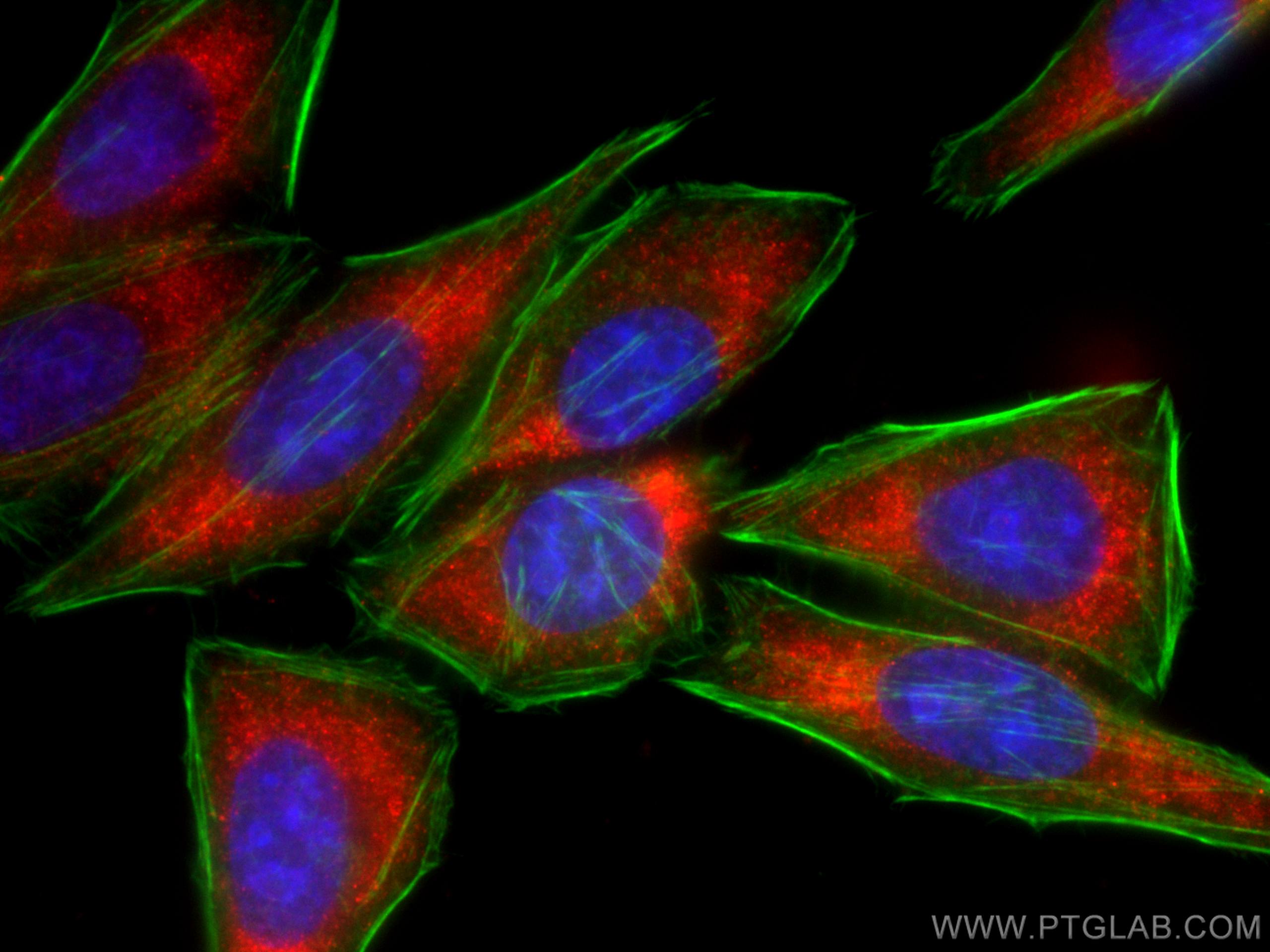验证数据展示
经过测试的应用
| Positive IF/ICC detected in | HepG2 cells |
推荐稀释比
| 应用 | 推荐稀释比 |
|---|---|
| Immunofluorescence (IF)/ICC | IF/ICC : 1:50-1:500 |
| It is recommended that this reagent should be titrated in each testing system to obtain optimal results. | |
| Sample-dependent, Check data in validation data gallery. | |
产品信息
CL594-67063 targets C1QA in IF/ICC applications and shows reactivity with Human samples.
| 经测试应用 | IF/ICC Application Description |
| 经测试反应性 | Human |
| 免疫原 | C1QA fusion protein Ag28622 种属同源性预测 |
| 宿主/亚型 | Mouse / IgG1 |
| 抗体类别 | Monoclonal |
| 产品类型 | Antibody |
| 全称 | complement component 1, q subcomponent, A chain |
| 别名 | C1QA |
| 计算分子量 | 245 aa, 26 kDa |
| 观测分子量 | 30 kDa |
| GenBank蛋白编号 | BC030153 |
| 基因名称 | C1QA |
| Gene ID (NCBI) | 712 |
| RRID | AB_2920081 |
| 偶联类型 | CoraLite®594 Fluorescent Dye |
| 最大激发/发射波长 | 588 nm / 604 nm |
| 形式 | Liquid |
| 纯化方式 | Protein G purification |
| UNIPROT ID | P02745 |
| 储存缓冲液 | PBS with 50% glycerol, 0.05% Proclin300, 0.5% BSA , pH 7.3 |
| 储存条件 | Store at -20°C. Avoid exposure to light. Stable for one year after shipment. Aliquoting is unnecessary for -20oC storage. |
背景介绍
The first component of complement, C1, is a calcium-dependent complex of the 3 subcomponents C1q, C1r, and C1s. C1q is composed of 18 polypeptide chains: six A-chains, six B-chains, and six C-chains. Each chain contains a collagen-like region located near the N terminus and a C-terminal globular region. Deficiency of C1q has been associated with lupus erythematosus and glomerulonephritis. This antibody is raised against C1qA which is the A-chain polypeptide of human complement subcomponent C1q.
实验方案
| Product Specific Protocols | |
|---|---|
| IF protocol for CL594 C1QA antibody CL594-67063 | Download protocol |
| Standard Protocols | |
|---|---|
| Click here to view our Standard Protocols |
